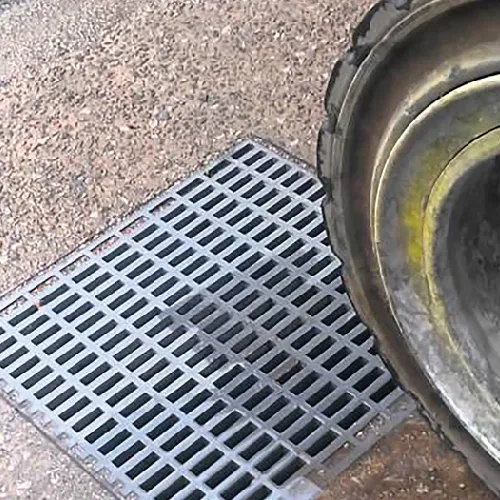loading...
- No. 9, Xingyuan South Street, Dongwaihuan Road, Zaoqiang County, Hengshui, Hebei, China
- admin@zjcomposites.com
- +86 15097380338
- Welcome to visit our website!
Understanding FRP Pultruded Sections and Their Applications in Construction
Understanding FRP Pultruded Sections Advantages and Applications
Fiber-Reinforced Polymer (FRP) pultruded sections have emerged as a revolutionary material in various engineering applications, thanks to their unique properties and versatility. The process of pultrusion—infusing fibers with resin under heat and pressure—creates a continuous, strong, and lightweight product that can be manufactured in a variety of shapes and sizes. This article delves into the characteristics, benefits, and applications of FRP pultruded sections.
The Manufacturing Process
Pultrusion starts with the selection of high-strength fibers, such as glass, carbon, or aramid, which are combined with thermosetting resins. The fibers are drawn through a resin bath, which saturates them before they enter a heated die that forms the raw material into the desired cross-sectional shape. As the material is pulled through the die, it is simultaneously cured, resulting in a rigid structural component. This automated process allows for the production of consistent and highly efficient structural profiles, which can range from simple shapes like rods and tubes to complex configurations like beams and ties.
Key Properties of FRP Pultruded Sections
1. Lightweight One of the most significant advantages of FRP is its low density compared to traditional materials like steel or aluminum. This characteristic makes it easier to handle, transport, and install, reducing overall project costs.
3. Corrosion Resistance Unlike metals, FRP materials are inherently resistant to corrosion from moisture, chemicals, and adverse environmental conditions. This property extends the lifespan of structures built with FRP, making it ideal for use in harsh environments such as marine and chemical plants.
4. Electrical Insulation FRP is non-conductive, which makes FRP pultruded sections particularly valuable in electrical and telecommunications applications, where electrical insulation is critical.
frp pultruded sections

5. Reduced Maintenance The durability and corrosion resistance of FRP minimize the need for regular maintenance, leading to long-term savings for owners and operators of structures.
Applications Across Industries
FRP pultruded sections have been successfully integrated into many sectors, showcasing their adaptability and performance.
- Construction One of the primary uses of FRP is in building construction, where it is utilized for structural reinforcements, formwork, and even in facade systems. Its lightweight nature eases the transportation and installation process, particularly in challenging locations.
- Infrastructure Bridges, boardwalks, and highway barriers are increasingly being constructed from FRP due to its strength and resistance to environmental degradation. For instance, FRP grid systems are being employed for pedestrian walkways because they can withstand heavy loads while resisting corrosion from saltwater.
- Marine Industry Boats and docks made from FRP show significant advantages over traditional materials. Their resistance to saltwater and aquatic growth combined with lightweight properties make them an efficient choice for marine applications.
- Energy Sector In wind energy, FRP components are used in blades due to their lightweight yet robust nature, contributing to improved efficiency in energy generation. Moreover, FRP is also utilized in the construction of components for offshore and onshore plants, where corrosion resistance is paramount.
Conclusion
FRP pultruded sections offer a modern solution to many traditional engineering challenges. With their unique blend of lightweight construction, high strength, and durability, they provide long-lasting benefits across multiple industries. As technology progresses and the market for composites expands, it is clear that FRP pultruded sections will play a pivotal role in the future of construction and infrastructure development, driving innovation and efficiency in various applications. Embracing these advanced materials will not only enhance structural performance but also lead to sustainable and cost-effective engineering solutions.
-
The Rise of FRP Profiles: Strong, Lightweight, and Built to LastNewsJul.14,2025
-
SMC Panel Tanks: A Modern Water Storage Solution for All EnvironmentsNewsJul.14,2025
-
GRP Grating: A Modern Solution for Safe and Durable Access SystemsNewsJul.14,2025
-
Galvanized Steel Water Tanks: Durable, Reliable, and Ready for UseNewsJul.14,2025
-
FRP Mini Mesh Grating: The Safer, Smarter Flooring SolutionNewsJul.14,2025
-
Exploring FRP Vessels: Durable Solutions for Modern Fluid HandlingNewsJul.14,2025
-
GRP Structures: The Future of Lightweight, High-Performance EngineeringNewsJun.20,2025
